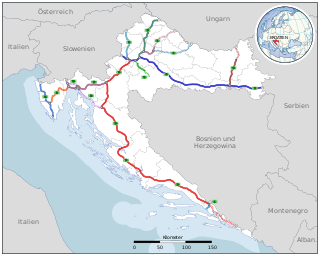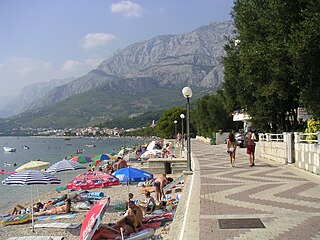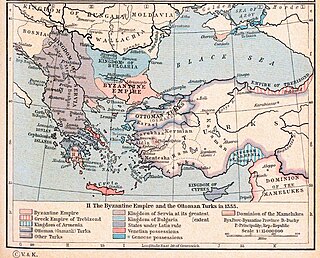
Electoral district X ( Croatian: X. izborna jedinica) is one of twelve electoral districts of Croatian Parliament.

Electoral district X ( Croatian: X. izborna jedinica) is one of twelve electoral districts of Croatian Parliament.

Electoral district X consist of: [1]
Under 2023 revision district boundaries were redrawn according to suggestion of Constitutional Court to compel proportional number of voters.
New district consist of:
|
|
| |||||||||||||||||||||||||||||||||||||||||||||||||||||||
|
|
| ||||||||||||||||||||||||||||||||||||||||||||||||||||||||||||||||||||||||||||||
|
|
| ||||||||||||||||||||||||||||||||||||||||||||||||||||||||||||||||||
|
|
Independent Ivan Grubišić
| ||||||||||||||||||||||||||||||||||||||||||||||||||||||||||||||||||||||||
| HDZ - HSS - HSP AS - BUZ - HSLS - HDS - ZDS - HRAST
| SDP - HNS - HSU - HL SR - A-HSS - ZS
| ||||||||||||||||||||||||||||||||||||||||||||||||||||||||||||||||||
|
|
| ||||||||||||||||||||||||||||||||||||||||||||||||||||||||||||||||||
|
|
| ||||||||||||||||||||||||||||||||||||||||||||||||||||||||||||||||||||||||||||||

Transport in Croatia relies on several main modes, including transport by car, train, ship and plane. Road transport incorporates a comprehensive network of state, county and local routes augmented by a network of highways for long-distance travelling. Water transport can be divided into sea, based on the ports of Rijeka, Ploče, Split and Zadar, and river transport, based on Sava, Danube and, to a lesser extent, Drava. Croatia has 9 international airports and several airlines, of which the most notable are Croatia Airlines and Trade Air. Rail network is fairly developed but regarding inter-city transport, bus tends to be far more common than the rail.

Brač is a Croatian island in the Adriatic Sea, with an area of 396 square kilometres (153 sq mi), making it the largest island in Dalmatia, and the third largest in the Adriatic. It is separated from the mainland by the Brač Channel, which is 5 to 13 km wide. The island's tallest peak, Vidova gora, or Mount St. Vid, stands at 780 m (2,560 ft), making it the highest point of the Adriatic islands. The island has a population of 13,931, living in twenty-two settlements, ranging from the main town Supetar, with more than 3,400 inhabitants, to Murvica, where less than two dozen people live. Brač Airport on Brač is the largest airport of all islands surrounding Split.
Krajina is a Slavic toponym, meaning 'country' or 'march'. The term is related to kraj or krai, originally meanings land, country or edge and today denoting a region or province, usually remote from urban centers.

Makarska is a town on the Adriatic coastline of Croatia, about 60 km (37 mi) southeast of Split and 140 km (87 mi) northwest of Dubrovnik, in the Split-Dalmatia County.

Hvar is a town and port on the island of Hvar, part of Split-Dalmatia County, Croatia. The municipality has a population of 4,251 (2011) while the town itself is inhabited by 3,771 people, making it the largest settlement on the island of Hvar. It is situated on a bay in the south coast of the island, opposite from the other nearby towns of Stari Grad and Jelsa.

The Makarska Riviera is a part of the Croatian coast of the Adriatic Sea, about 60 kilometers long and only several kilometers wide, squeezed under towering mountain Biokovo. Sunny climate and long pebbly beaches make this region a popular tourist destination. A string of settlements along the coast from the border with Omiš coast on northwest to Neretva Delta on the southeast:

The medieval period in the history of Serbia began in the 6th century with the Slavic migrations to Southeastern Europe, and lasted until the Ottoman conquest of Serbian lands in the second half of the 15th century. The period is also extended to 1537, when Pavle Bakić, the last titular Despot of Serbia in Hungarian exile, fell in the Battle of Gorjani.

The Dalmatian Hinterland is the southern inland hinterland in the historical Croatian region of Dalmatia. The name zagora means "beyond (the) hills", which is a reference to the fact that it is the part of Dalmatia that is not coastal and the existence of the concordant coastline where hills run parallel to the coast.

Municipalities in Croatia are the second-lowest administrative unit of government in the country, and along with cities and towns they form the second level of administrative subdisivion, after counties. Each municipality consists of one or more settlements (naselja), which are the third-level spatial units of Croatia.

The Stato da Màr or Domini da Mar was the Republic of Venice's maritime and overseas possessions from around 1000 to 1797, including at various times parts of what are now Istria, Dalmatia, Montenegro, Albania, Greece and notably the Ionian Islands, Peloponnese, Crete, Cyclades, Euboea, as well as Cyprus.
The Croatian Parliament electoral districts are the special territorial subdivision of Croatia used for the country's parliamentary elections.

D116 is the main state road on island of Hvar in Croatia connecting towns of Hvar, Milna, Stari Grad and Jelsa to Sućuraj and ferry ports, from where Jadrolinija ferries fly to the mainland, docking in Split and the D410 state road and Drvenik and the D412 state road. The road is 77.9 km (48.4 mi) long.
The Maclean Mission (MACMIS) was a World War II British mission to Yugoslav partisans HQ and Marshal Tito organised by the Special Operations Executive (SOE) in September 1943. Its aim was to assess the value of the partisans contribution to the Allied cause and the means to increase it. It was led by a recently promoted Brigadier Fitzroy Maclean and was the first such mission with full authorization and a personal message from Winston Churchill. His memoir of these years forms the final third of Eastern Approaches (1949).
This article documents the timeline of the COVID-19 pandemic in Croatia.

The Municipality of Tomislavgrad is a municipality in Canton 10 of the Federation of Bosnia and Herzegovina, an entity of Bosnia and Herzegovina. Its seat is in the town of Tomislavgrad. According to the 2013 census, it has a population of 31,592.